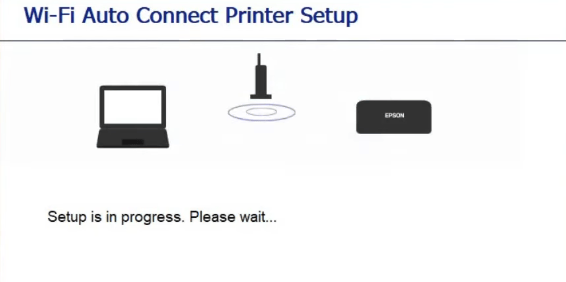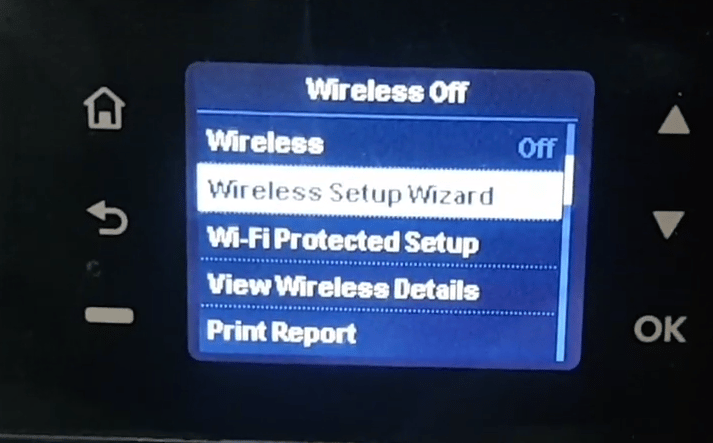How to Connect to a Wireless Printer
how to connect to a wireless printer, troubleshoot common issues, and discover the benefits of wireless printing for home and office use.
Praveen Kumar - Canon Printer Specialist
1/15/20257 min read


In today's digital workspace, printing tasks can become a significant source of frustration when relying on traditional wired setups. The constant struggle with tangled cords, limited mobility, and persistent connectivity problems turns what should be a simple task into a time-consuming ordeal. Many professionals, whether working from home or managing busy offices, have experienced the stress of needing to print an urgent document only to find their printer inaccessible due to its physical location or connection issues, leading to disrupted workflows and unnecessary anxiety. Wireless printing emerges as an elegant solution to these common challenges, eliminating cable-related hassles while making the printing process more streamlined and accessible. This blog will explore the fundamentals of wireless printing technology, including its implementation, advantages, and solutions to common technical hurdles, empowering you to optimize your printing experience.
1. What is Wireless Printing?
Wireless printing is sending a print job from your device to a printer without cables. Instead of using USB cables, wireless printers use Wi-Fi, Bluetooth or cloud services to connect your device to the printer.
This works with all devices, laptops, smartphones, tablets and desktops, personal or professional.
Wireless Printing Features
Wi-Fi: Connects to your home or office network.
Mobile Printing: Print from smartphones and tablets using Apple AirPrint, Google Cloud Print or proprietary printer apps.
Cloud Printing: Send print jobs from Google Drive or Dropbox.
Multi-Device Support: One printer can print to multiple devices.
Why it matters
Wireless printing removes the limitations of wired setups, gives you flexibility and convenience. Whether you’re in a big office or small home workspace, wireless printers gives you the freedom to print from anywhere, making your workflow smoother and more productive.
2. Why is Wireless Printing Important?
Wireless printing has become more important than ever in today’s fast paced technology world. Here’s why:
Convenience and Mobility
Those days of being tied to a desk or having to physically connect your device to a printer are gone. Wireless printing lets you print from anywhere in your home or office, whether you’re in a different room or even from your mobile device.
Example: Finish a presentation on your tablet in the living room and send it to print without moving.
Modern Workflows
With remote and hybrid work becoming the new norm, wireless printing lets employees print essential documents from their devices seamlessly. For offices, it reduces bottlenecks by allowing multiple users to connect to the same printer wirelessly.
Multiple Devices
Households and offices have multiple devices—smartphones, tablets, laptops and desktops. Wireless printers can connect to all these devices, no more switching cables or compatibility issues.
Cloud Services
Wireless printers are smarter and more connected. Many support cloud services like Google Drive, Dropbox and Microsoft OneDrive. So you can access your files from anywhere and send them to print without downloading first.
Space Saving
No more long cables or physical proximity required, wireless printers can be placed anywhere within range of the Wi-Fi signal. Perfect for small home offices or shared workspaces.
Bottom Line: Wireless printing is not a luxury, it’s a necessity for today’s user who wants convenience, efficiency and flexibility. Whether for home or office use, it’s a solution that fits today’s digital lifestyle.
3. Wireless Printers
Wireless printers come in many types, each for different needs and preferences. Let’s get into it.
Types of Wireless Printers
Wi-Fi Printers
Wi-Fi printers are the most common type of wireless printers. They connect to your home or office network through your Wi-Fi router. Once connected, any device on the same network can print to the printer. Wi-Fi printers are the most flexible and best for homes or offices with multiple users and devices.Bluetooth Printers
Bluetooth printers are for smaller print jobs, used in more personal settings. They don’t require a Wi-Fi network; instead, devices can connect directly via Bluetooth. Not as fast or flexible as Wi-Fi printers, but great for printing from smartphones or tablets without a network.Cloud Printers
Cloud printing is a service that allows you to print from any device connected to the internet, from anywhere. For example, Google Cloud Print (though now discontinued) allowed you to print to a printer linked to your Google account. Now many printers have their own cloud print solutions or integrate with services like Apple AirPrint which allows you to print from anywhere.
What to Look for in a Wireless Printer
Setup
Look for printers with easy setup process, such as step-by-step instructions or even mobile app support for faster setup. Some wireless printers have a setup wizard, perfect for beginners.Device Compatibility
Make sure the printer supports your devices. A good wireless printer will work on multiple platforms—Windows, macOS, Android, iOS.Print Quality and Speed
Don’t sacrifice quality. Whether you need sharp text or vibrant photos, make sure the printer meets your printing needs. And if you’re in an office that needs high volume printing, consider print speed.Mobile and Cloud Printing Support
Mobile printing features like Apple AirPrint, Google Cloud Print (or alternatives) and proprietary mobile apps are a must to get the most out of wireless printing.Security Features
Wireless printers need security to protect sensitive documents. Look for models with built-in security features like encryption and password protection to prevent unauthorized access.
Why Wireless Printer?
Wireless printers offer convenience and flexibility. They make printing for multiple users easier, perfect for mobile printing and integrates with cloud solutions. These are great for businesses, remote workers and tech-savvy home users who want to simplify their printing.


4. How to Set Up a Wireless Printer
Setting up a wireless printer is easier than you think. Follow these steps to get your wireless printer working.
Unbox and Power On Your Printer
Unpack your printer and make sure all the bits (power cord, ink cartridges, paper trays etc) are there. Once everything is out, plug in the printer and turn it on.
Connect the Printer to Your Wi-Fi
Now the printer is on, it’s time to connect it to your Wi-Fi. Most wireless printers have a built in display screen that will walk you through the setup. Follow these steps:
Go to Network Settings: Go to the network settings on the printer’s display screen. Look for Wi-Fi Setup or Network Setup.
Select Your Wi-Fi: The printer will search for networks. Select your Wi-Fi.
Enter Your Wi-Fi Password: Enter your network password using the on-screen keyboard. Make sure you get it right or you’ll have connection issues.
Install the Printer Drivers and Software
Once the printer is connected to your Wi-Fi, it’s time to install the drivers and software on your computer or device. Follow these steps:
Download the Printer Software: Go to the printer manufacturer’s website or use the installation CD (if you have one). Download the printer drivers and software for your OS (Windows, macOS etc.).
Run the Installer: Open the downloaded file and follow the prompts to install the printer drivers. When prompted, choose the Wireless option.
Done: Once installed, the printer will be connected to your device and you can start printing.
Connect Other Devices to the Printer
Now the printer is set up on your network, you can connect other devices like smartphones, tablets and laptops. Here’s how to do it for each:
For Windows/Mac:
Go to Settings > Devices > Printers & Scanners on Windows or System Preferences > Printers & Scanners on Mac.
Select your printer from the list and click Add or Add Printer.
For Mobile Devices (iOS/Android):
On iOS, use AirPrint. Open the document or photo you wish to print, tap the Share icon, and choose Print. Choose your wireless printer.
On Android, open the document, tap the three-dot menu, select Print and choose your printer.
Print a Test Page
Now everything is connected, print a test page to make sure the printer is set up right. The test page will confirm the printer is connected to your network and ready to go. If the test page doesn’t print, check your Wi-Fi settings and make sure the printer is connected to the right network.
5. Advanced Features of Wireless Printers
Modern wireless printers have so much more to offer than just printing. These features are designed to make printing easier, faster and more integrated with today’s digital workflows. Let’s take a look at some of the advanced capabilities that will help you get the most out of your wireless printer.
Cloud Printing: Print from Anywhere
What Is It:
Cloud printing allows you to send documents to your printer from anywhere in the world as long as you have an internet connection. You don’t need to be connected to the same Wi-Fi network as the printer. Cloud printing services like Google Cloud Print (though discontinued) or printer brand specific solutions allow you to print from any device.
How It Works:
Set up your printer to connect to your cloud printing service.
Upload or send documents to print via your cloud service.
Your printer picks up the job, no matter where it is.
Mobile and Remote Printing
What Is It:
Mobile printing allows you to print directly from your smartphone or tablet. Many modern wireless printers support printing from mobile devices via apps like Apple AirPrint, Google Cloud Print (or alternatives) or printer brand specific apps.
How It Works:
Install the app for your printer on your mobile device.
Make sure the device and printer are connected to the same Wi-Fi network.
Open the document, image or webpage you want to print, then select your wireless printer.
Voice-Activated Printing
What Is It:
Voice-activated printing is a feature that works with virtual assistants like Amazon Alexa or Google Assistant. You can send print jobs to your printer using voice commands, no need to touch your device.
How It Works:
Link your wireless printer to your voice assistant.
Use voice commands like “Alexa, print my to-do list” or “Ok Google, print this document”.
The assistant processes your command and sends the print job to your printer.
Why It’s Beneficial:
This feature is convenient especially in busy environments. It’s hands-free printing so you can manage your printing tasks while multitasking or when your hands are busy.
Wireless Scanning and Faxing
What Is It:
Many wireless printers are multifunction devices that print, scan and fax documents. Wireless scanning allows you to scan documents directly to your computer or cloud storage without the need for a wired connection.
How It Works:
Place the document you want to scan on the scanner glass.
Select the scan option from the printer’s control panel or app.
Choose the destination for the scanned file (computer, email or cloud storage).
Why It’s Beneficial:
This feature adds more convenience to wireless printers, making them all-in-one solutions. It’s useful in offices or home offices where you need to scan and send documents without dealing with cables or complicated setup.
FAQs for Securing Your Wireless Printer
1. How can I protect my Wi-Fi network?
Wireless printers depend on your Wi-Fi network for operation. To secure it:
Use WPA3 encryption (or WPA2 as a backup).
Create a strong password (e.g., avoid simple ones like '123456' or 'password').
Disable Wi-Fi Protected Setup (WPS) to prevent vulnerabilities.
2. Why should I change printer default settings?
Default settings are easy targets for hackers.
Replace the default admin password with a strong, unique one.
Disable remote management unless necessary.
3. Should I enable printer firewalls?
Yes, firewalls add an extra layer of protection.
Turn on the printer’s firewall if available.
Use network segmentation to isolate your printer from other devices.
4. Why are firmware updates important?
Firmware updates fix security flaws.
Enable automatic updates or check for updates manually.
Insights
Explore the latest in printer technology and tips.
Resources
Support
contact@bestprintershop.com
+918920029543
© 2024 BestPrinterShop . All rights reserved.
